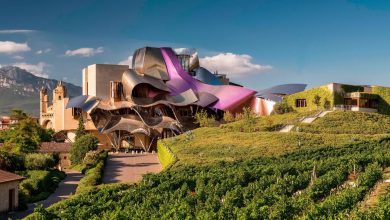Crafting an extensive list of Rome’s neighborhoods takes some time. Although most people are familiar with Rome’s historical greatness, most would be surprised to learn about its great territorial expansion. From an administrative point of view, the city is divided into 15 municipalities, each with its own president, board, and ritual council.
Additionally, there are 35 neighborhoods of Rome. They represent the city’s second toponymic subdivision.
Table of Contents
Let’s discover and learn more about the history of these Neighborhoods of Rome.
The Historic Center

Let’s start strong with the most famous and evocative area of the capital. Recognized as a UNESCO World Heritage Site, Rome’s historic center is full of pearls steeped in history. It would be enough to start from Piazza del Popolo with its obelisk and enjoy the “trident of the road” (Via di Ripetta, Via del Corso, and Via del Babuino). This extends behind the “Twin Basilicas”, reaches Piazza Venezia, and passes through some popular tourist spots, including the Spanish Steps, the Trevi Fountain, and the Pantheon.
The Jewish Quarter

The Jewish “ghetto” of Rome is a small hidden treasure located next to the Campidoglio and overlooking the Lungotevere. Considered the oldest in the West, it was built in 1555 with the requirement of residence for the Jews of the capital.
Today, it is one of the most popular tourist destinations. Many people choose to visit the Synagogue, a cultural reference point for the entire Jewish community, the Jewish museum, the ruins of the portico of Octavia, the Theatre of Marcellus (Teatro di Marcello), as well as the unique and beautiful fountain of the Turtles.
Trastevere

Trastevere (“beyond the Tiber”) is perhaps the most characteristic of Rome’s neighborhoods. Its appearance nods to bohemian sensations, with its myriad of narrow alleys and intricate piazzas. Divided into two sides by Viale Trastevere, the neighborhood lives on two souls. The first, more tumultuous, is on the side of Santa Maria in Trastevere, Piazza Trilussa, and the “American zone”, with a large population of young people. On the other side of Viale Trastevere, one experiences a quieter and more authentic Trastevere. This area is defined by cobblestone streets and traditional taverns.
Monti

Monti is a young and “hipster” neighborhood that coexists in harmony with the old. A neighborhood of quant art galleries, wineries, good restaurants, bars, and artisans, it is one of the favorite areas of the city for young Romans and beyond.
What was once the Suburra in Roman times, filled with working class slums, prostitutes, and pimps, Monti is now one of the coolest neighborhoods in Rome.
Prati

Known for its grand boulevards, elegant buildings and modern charm, Prati has a distinct personality and style reminiscent of a Parisian neighborhood. The district’s main attraction is the shopping street, Via Cola di Rienzo, lined with international and Italian haute couture stores.
Monteverde

Monteverde is a popular district in which to seek refuge from the hectic city life. Its shady streets and slow pace make it one of the quietest neighborhoods in the capital. It is located behind the Gianicolo and its urbanization was carried out in the early twentieth century, with the construction of elegant villas that today are part of what is called Monteverde Vecchio.
Testaccio

Together with Trastevere, Testaccio is the heart of Rome. At the beginning of the second century B.C. the Testaccio area was chosen as the site of the river port Emporium, a landing place for foodstuffs and goods. Olive oil, cereals, and other essential food products arrived in terracotta amphorae and, once emptied of their contents, were disposed of in an open dump. The result of millions of stacked amphorae resulted in Monte dei Cocci, which continues to be present and open to visitors. Centuries later, Testaccio was home to Europe’s largest slaughterhouse (now a museum and event venue) and housed the first stadium of the city’s most beloved soccer team, AS Roma.
We hope you enjoyed the first part of the tour through the neighborhoods of the eternal city. Don’t miss the second part here!





